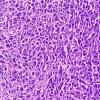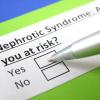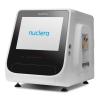Steve Clarke on the history of screening tests and programme criteria, as applied to cancer screening, notably colorectal cancer.

The coronavirus crisis has brought screening into the spotlight, in this case a PCR procedure from a throat swab sample to detect the SARS-COV-2 virus and an upcoming specific antibody test to detect positive immune responses.
Some of the pitfalls to the introduction of such a screening programme certainly seem to have been encountered in the early stages of this important national project in the UK, notably in accessibility and the choice of a valid test with high sensitivity and specificity. These difficulties will be further discussed later in this article.
Screening for disease can be defined as an organised search using a valid test to identify asymptomatic individuals with a disease, at an early stage, to improve the success of treatment – vitally important in cancer screening.
Screening programmes vary in scale, from population screening (PS) to screening smaller groups, such as high-risk groups or family studies. For a number of reasons, PS may be selective to target those at high risk due to age, gender or lifestyle (SPS). This may also include exposure to occupational carcinogens and sunlight, as well as smoking and alcohol consumption.
Many factors have to be considered prior to the introduction of a screening programme for cancer, such as the epidemiology of the specific cancer, including the incidence and distribution within the population, the availability of treatment and its predicted success in improving the quality of life and survival time, whilst balancing these benefits against potential harms.
“Mammography screening for breast cancer was introduced in the UK in 1987”
Early examples of screening
Disease screening requires a detailed knowledge of the disease under investigation and its treatment and depends on a valid test procedure. The first few decades of the 20th Century provided significant advances in analytical techniques with simple urine or blood sugar tests to screen for diabetes, and in 1906 the Wasserman reaction to detect syphilis was first described, notably in the US often associated with pre-employment, life insurance applications, marriage licence conditions and entry into military service. Pulmonary tuberculosis has been a constant health problem from ancient times and was especially prevalent in the UK post-World War Two. During the 1940s, mass civilian screening was performed using portable X-ray machines.




